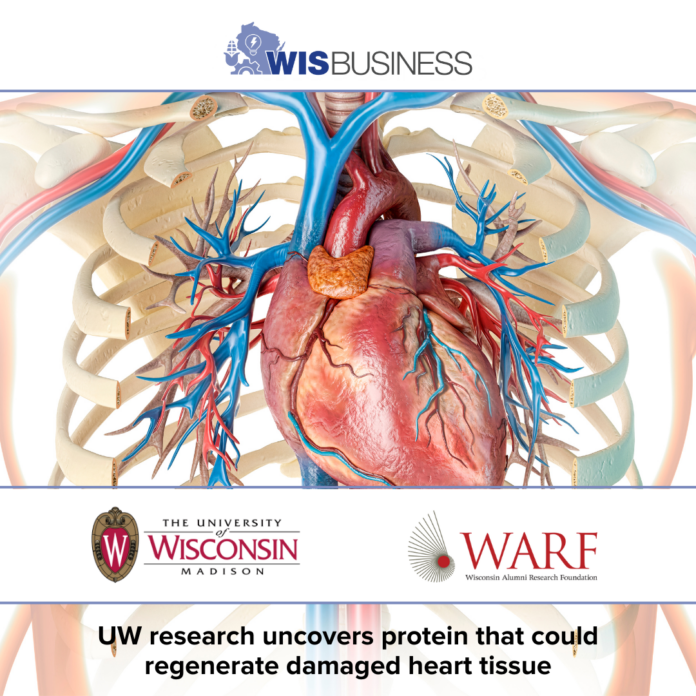UW-Madison researchers have identified a protein that could be used to regenerate damaged heart tissue, giving heart failure patients hope for a potential treatment.
The Wisconsin Alumni Research Foundation recently spotlighted the breakthrough as a “top licensing prospect” among UW-Madison health inventions. The protein, called LRRC10, was discovered by researchers Ahmed Mahmoud, Timothy Kamp and Youngsook Lee, who specialize in heart development and cardiac disease.
Improving treatments for coronary artery disease have led to better survival rates, according to Kamp, but many of these patients experience heart failure as their heart is unable to grow back damaged tissues. In remarks provided by WARF, Lee said the heart is the “least regenerative” organ.
“The crucial problem is to understand how we can make the cardiac muscle cells that were once damaged induced to divide, and so they regenerate and restore the function,” said Lee, a professor emerita in the university’s Department of Cell and Regenerative Biology.
In seeking to understand why adult heart cells don’t divide in this way, the research team found the key protein regulates the final phase of that cell division. LRRC10 is “necessary” for young cardiac muscle cells to divide, according to Lee.
Mahmoud, an assistant professor with the UW School of Medicine and Public Health, says “overexpressing” and reintroducing the protein causes the heart cells to complete the cell division process.
“It is involved when nature can’t do it on its own,” he said. “And now our goal is to control that and reintroduce that in an adult setting to reawaken this dormant regenerative capacity.”
The process for advancing the discovery involves testing in animal models followed by larger animals and eventually applying it in humans after clinical trials. To do so, therapies could insert the gene for the protein into a viral delivery mechanism to safely deliver it to the heart, according to Kamp.
“The technology for viral vectors and delivery of different genes to the body continues to improve dramatically over recent years, so there’s a number of ways we can get this gene encoding this important protein into the injured heart,” he said.
See more.
–By Alex Moe






